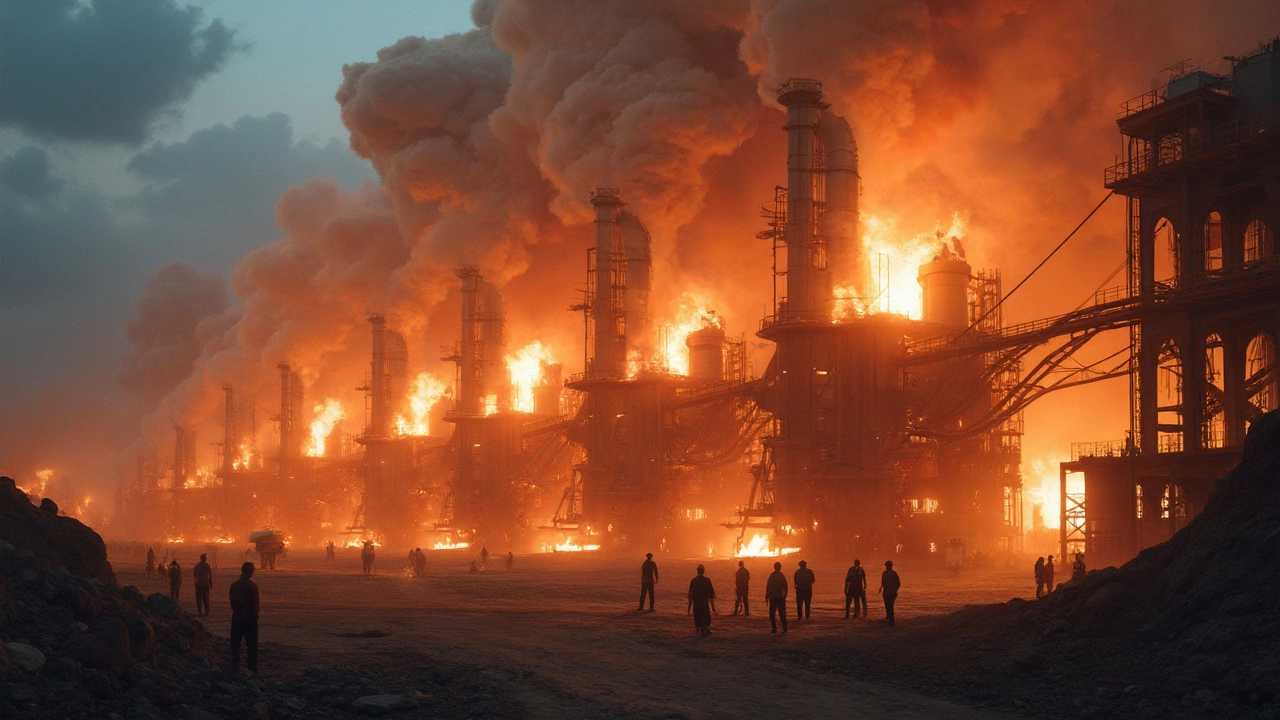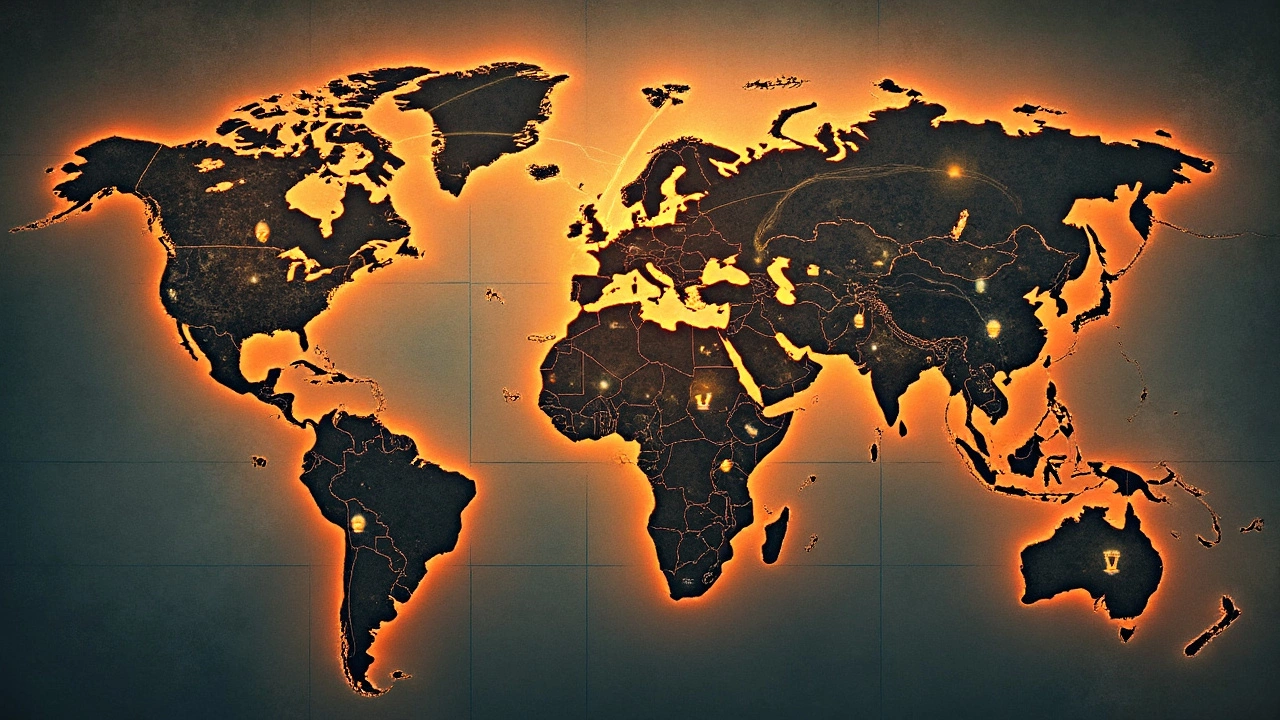 Mar, 11 2025
Mar, 11 2025
Steel is everywhere around us—just think about bridges, skyscrapers, and even the cutlery you use daily. But have you ever wondered where all this steel comes from? Behind the scenes, there are a few massive producers shaping the global supply.
First off, let's talk about the country synonymous with steel: China. The Chinese steel industry is like a juggernaut. Their massive output has changed the game globally. With companies like Baowu Steel Group leading the pack, China's influence on steel prices worldwide is huge.
Right next to China, India is fast catching up. Companies like Tata Steel and JSW Steel are ramping up production to meet both domestic and international demand. The growth rate there is something to watch.
But it's not just Asia calling the shots. In Europe, names like ArcelorMittal are significant players. Despite challenges, their commitment to innovation keeps them in the competition. Each of these producers brings something unique to the table, driving advancements and addressing new challenges in the steel industry.
- The Global Steel Landscape
- China's Steel Dominance
- Steel Giants in India
- Emerging European Producers
The Global Steel Landscape
If you think steel is just big hunks of metal that hold stuff together, think again. The global steel landscape is a fascinating network of massive production, economic strategies, and cultural influences. The steel manufacturing story is packed with surprising tidbits and industry giants shaping our world.
Starting with the basics, there are five top players in the steel production world, and these guys pretty much run the show. China leads the pack with a jaw-dropping production volume, accounting for over 50% of the world's steel output. Yes, over half! That’s largely thanks to companies like China Baowu Steel Group and HBIS Group, who pump tons of steel out of the factories daily.
Globally, steel plants aren't just about volume. Technology and innovation are critical. For example, Japan, while not the largest producer, is a leader in technology and efficiency. Companies like Nippon Steel focus heavily on quality, given their smaller natural resource base.
The regional dynamics also tell a tale. If you swing by Russia, the likes of Evraz and Severstal play a key role, thanks to the country's vast mineral resources. Meanwhile, in the U.S., although they produce far less than Asian giants, companies like U.S. Steel are known for focusing on advanced-use industries, like automotive and aerospace.
Now, here’s a quick snapshot that puts numbers into context:
| Country | Production (in million metric tons, 2023) |
|---|---|
| China | 1,032 |
| India | 125 |
| Japan | 87.5 |
| United States | 85 |
| Russia | 70 |
This table gives you a clearer picture of who’s making how much steel. It’s a mix of leading economic forces and strategic influencers.
What’s next for these steel giants? With increasing emphasis on eco-friendly practices and smart manufacturing technology, the steel industry continues to evolve. Innovations in recycling and cleaner production methods are hot topics. For those interested in global economics or just curios about what's reinforcing their city's skyline, the world of steel offers plenty of intrigue.
China's Steel Dominance
When it comes to steel production, China stands head and shoulders above the rest. The country produces over half of the world's steel, and that's no small feat. Companies like Baowu Steel Group and Hesteel Group lead the charge, consistently ranking at the top of global production charts.
What fuels this dominance? For starters, China's economic boom over the past few decades has driven massive infrastructure projects, leading to an insatiable demand for steel. Skyscrapers, rail lines, and bridges—China has been building like there's no tomorrow.
Key Players and Their Strategies
Baowu Steel Group isn't just the largest in China; it’s the biggest in the world. They leverage advanced technology and economies of scale to produce steel efficiently. Hesteel Group and Ansteel Group also play crucial roles by modernizing their plants and expanding their capabilities.
Impact on Global Markets
China's massive output can sway global steel prices. When China adjusts its production, it often sends ripples through the market. Ever noticed a sudden change in steel price? Chances are it's related to something happening in China.
Challenges Ahead
The Chinese steel industry doesn’t just sail smoothly, though. Overcapacity issues and environmental regulations pose significant challenges. The government is pushing for more sustainable practices, so many companies are innovating to reduce emissions.
To visualize China's dominance, here's a quick look at some numbers from 2023:
| Company | Output (Million Tonnes) |
|---|---|
| Baowu Steel Group | 115 |
| Hesteel Group | 67 |
| Ansteel Group | 57 |
In a nutshell, China's grip on the steel industry remains tight. As they navigate environmental concerns and market demands, the global industry watches closely.

Steel Giants in India
India isn't just known for its spicy curries and Bollywood, it's also making waves in the steel production world. The country is a significant player, with its steel giants stepping up to the international stage. What's driving this boom, you ask? Well, let's dive into it.
Tata Steel: A Trusted Name
When it comes to steel in India, Tata Steel is a name that can't be ignored. Founded over a century ago, it has grown into one of the world's top steel producers. They've made a name for themselves with reliable and sustainable practices. With efforts to cut down on emissions, Tata Steel is not just about quantity, but quality too. They've been investing heavily in technology to stay ahead of the curve.
JSW Steel: Powering through Innovation
Then there's JSW Steel, another heavyweight that's taking innovation to new heights. They’ve been pumping resources into research and development, ensuring they deliver high-quality products while minimizing environmental impact. Thanks to their aggressive expansion plans, JSW is on the radar of anyone following the industry closely.
| Company | Annual Production (Million Tons) | Global Ranking |
|---|---|---|
| Tata Steel | ≈30 | Top 15 |
| JSW Steel | ≈25 | Top 20 |
Why India is a Hotspot
But why is India such a steel manufacturing powerhouse? It's simple. The demand within the country is skyrocketing, thanks to a fast-growing economy and infrastructure projects aplenty. Plus, there's a push from the government to make India self-sufficient in industrial production. Hence, companies are ramping up efforts to meet this roaring demand.
In essence, India's steel giants aren't just setting records; they're redefining what's possible in the industry. Keep your eyes peeled, because this is just the beginning for them.
Emerging European Producers
Europe has always been a key player in the steel industry, but now we're seeing some interesting shifts. Some producers are stepping up their game, focusing on steel production that meets environmental standards and technological advancements. This isn't just good for the planet—it's a smart business move too.
Green Steel Initiatives
European companies like SSAB in Sweden are pioneering the move towards 'green steel,' aiming to cut out fossil fuels from the steel-making process entirely. Their initiative has caught global attention and could set a new standard in the industry.
SSAB CEO Martin Lindqvist said, "Our aim is to become the world's first fossil-free steel company by 2026."
Technological Advancements
Meanwhile, German giant Thyssenkrupp is making waves with high-tech production methods. They're investing heavily in digitalization and automation to stay competitive and efficient. It's about using AI to predict demand and streamline production costs.
The Role of Innovation
A strong emphasis on innovation also means exploring new products. European companies are diversifying their portfolios to include more specialized steel products for industries like automotive and aerospace. Quality over quantity is their mantra.
Take a look at this quick comparison of technological adoption among European producers:
| Company | Focus Area | Target Year |
|---|---|---|
| SSAB | Fossil-Free Steel | 2026 |
| Thyssenkrupp | Automation & AI | Ongoing |
So, while Europe might not be producing the same volumes as some Asian giants, their strategic focus on innovation and sustainability is definitely putting them on the map.